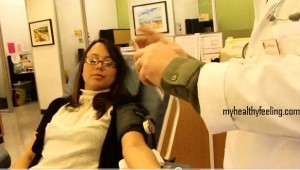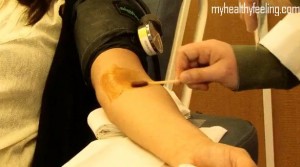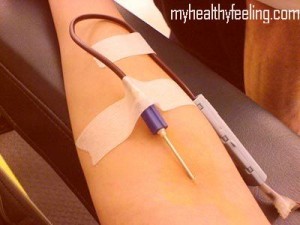Blood donation facts are essential to be understood before you decide to donate blood. This will equip you with important information on how blood donation takes place. This is done when a person willingly offers blood to be drawn from his/ her body. The obtained blood is then used either for transfusion (intravenously giving blood to the patient’s body) or for fractionation (process of separating whole blood into components). In developed countries blood donors do not ask money for providing blood, whereas in some poor countries people are paid for blood donation. Blood donation can be for community supply or for transfusion required by a relative or friend.
Numerous donors donate blood just for charity sake, on the other hand some are paid for donating blood. Some of the donors are also paid incentives like ‘paid time off’, etc. In some cases volunteers can also have their blood drawn which will be helpful in their future as they can opt for blood without paying or waiting for too long. It should be known that blood donation is often safe. In rare cases, a person may develop skin rashes or blisters or a person may faint. Here is some important information about blood donation.
Blood donation Requirements and Guidelines
• Every year there is a requirement of 40 million units of blood. However, only 4 million units are obtained through blood donation on annual basis.
• It should be known that blood is crucial for body system and there is not substitute for blood
• Every two second the need of blood arises but donors are comparatively less
• According to statistics over 38,000 blood donor are required on daily basis
• Thirty million components of blood are transfused every year
• The most demanded blood groups as required by the hospitals and healthcare centers is ‘Type O’ blood group
• RBC or Red Blood Cell transfusion, on an average, is believed to be 3 pints
• It is said that a person affected with sickle cell issues may need blood transfusion too frequently throughout their lifespan
• Over one million individuals are diagnosed positive for cancer every year. Most of these affected individuals need blood and in some cases on daily basis, particularly during their chemotherapy treatment.
• A patient met with car accident, alone may require approx hundred 100 units of blood.
Blood donation supply:
• Though science has reached to extreme heights, experts have failed to find substitute of blood till date. It is a fact that blood cannot be artificially produced; hence, the only way to obtain blood is through generous donors.
• The reason why ‘O negative’ blood group is in demand is that it can be transfused into individuals belonging to any blood group. It is always in high demand but supply is significantly less.
• Apart from ‘O negative’ Type ‘AB positive’ can also be transfused to individuals having other blood type. Similar to ‘O negative’ even, ‘AB positive is rare blood type and its supply is also low, though its demand is high. Read about ABO Incompatibility, a disorder of blood transfusion wherein two incompatible blood types are mixed with each other
Blood donation process:
• The process of donating blood is safe. While drawing blood a sterile needle is inserted in your vein which is disposed after use; this assures that you will not be affected by any transmittable disease due to the procedure.
• There are four simple steps of blood donation procedure; these steps are registration before donation, medical history as well as mini physical examination, drawing blood and then refreshments.
• Every donor has to undergo mini physical examination to check for body temperature of the donor, blood pressure, rate of pulse and hemoglobin. This is done to determine whether it is safe for the donor to donate blood.
• The actual donation process that is drawing blood from the donor takes approximately 10 to 12 minutes. The entire process of blood donation would take not more than approximately 75 minutes.
• There are about ten units of blood in an average individual’s body. While donating blood you only give away 1 unit of blood.
• A healthy individual may donate RBC in every 56 days, whereas double RBC can be donated every 112 days
• A healthy donor should maximum donate platelets only 24 times in a year, however it is safe for him to donate platelets after seven days from previous donation event, unless he/ she exceeds 24 such events.
• All the obtained blood by the health care centre through blood donation is first tested for HIV and other infection such as syphilis, hepatitis B, hepatitis C, etc, before it is sent for transfusion.
Blood components
• Approximately seven percent of your body weight is attributed to blood
• There are four kinds of transfusable components that are derived from donated blood. These components are red cells, blood platelets, blood plasma and Cryoprecipitated Antihemophilic Factor (commonly referred to as cryo). Generally 2 to 3 of these components can be obtained from a unit of the entire donated blood. This means that every donation can be helpful in saving three lives.
• The donor can either choose to give the whole blood or he may choose to donate only some components. This fact is not known to many, and the process of donating only specific components is known as ‘Aphaeresis’.
• A dose for transfusion of platelets can be acquired through just one aphaeresis (donation of platelets). Or the dose of transfusion of platelets can be obtained by five such whole blood donations.
• The blood platelets obtained trough donation should be transfused within 5 days from the time of collection.
• Healthy bone marrow constantly supplies red cells, blood platelets and plasma. The body regains some elements within few hours of donation and some is replenished within few weeks.
Post blood donation facts and things to remember:
It is beloved that people may feel weak after donating blood, but most healthy people feel normal after blood donation is done. You are usually given something to eat and restore energy to avoid chances of fainting which is already rare. You should drink more liquid in next 4 hours. Do not consume alcohol without eating anything as well as do not smoke for at least next half an hour to 45 minutes. If you feel dizziness sit with your head placed between your knees. Incase you notice blood from the spot where needle was injected, raise you arm up and hold for sometime. You should get back to your normal activities soon after donation. These are some important blood donation facts to be remembered before giving blood.
Blood Donation Pictures
Also read about how to interpret blood test results


